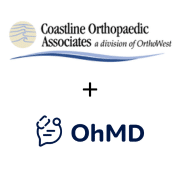
CASE STUDY – HIPAA compliant text messaging to patients eases support staff burden at busy family practice
Two-way patient texting helps a Kentucky family practice slash call volume by 22% in four months
The top challenge Family Practice Associates of Lexington faced before implementing HIPAA compliant text messaging to patients was what the Director of Clinical Education, Virginia Burberry, calls “round robin phone tag”. Support staff were constantly trying to reach patients by phone to inform them of outstanding lab results, referrals, bills, and returned mail, only to leave a voicemail and rarely get a call back.
With 24 providers and over 500 patients walking through the door every day, those missed connections meant a backlog of work for staff. “Our support staff takes care of every question, every request, every refill, and all the lab results whether they’re normal or abnormal, so these message boxes that they work can get very full and take a lot of time,” said Burberry.
When FPA began using OhMD for HIPAA compliant text messaging to patients, their average call volume dropped 22% from 554 weekly calls to 348 in just four months. Now that support staff can send patients HIPAA compliant texts instead of calling, they’re clearing inboxes faster, and are able to close the loop on tasks that would normally be left open for weeks waiting for a patient to respond.
“OhMD has taken a huge burden off of our support staff,” said Burberry. They’re no longer overwhelmed with phone calls, can text multiple patients simultaneously, and don’t necessarily have to worry about responses because they know HIPAA compliant text messaging to patients has a higher delivery rate than calling. Ninety-eight percent of texts are read while only 20% of phone calls from an unfamiliar number are answered. “Reaching those patients in a timely manner has been ultimately life-changing for our support staff,” said Burberry.
OhMD has also made it easier for providers to connect with patients. Two of FPA’s mental health providers conduct all their appointments through video and can spend an hour or longer in session, so they need a video tool that is stable and reliable. With OhMD, since video links are sent via HIPAA compliant text messaging, patients don’t need to log into a portal. Because of this, providers have seen better connectivity and fewer system lags with OhMD, reducing dropped calls.
“With OhMD, if you’ve got your cell phone in front of you, you’re going to be able to do telehealth. It doesn’t matter if it’s five minutes or two minutes before their appointment. We can send them that video link and we can immediately do it. You don’t have to log into a portal account. Everything is more streamlined,” said Burberry.
FPA also uses OhMD forms to digitize all patient forms, allowing staff to use HIPAA compliant text messaging to send forms to patients to fill out from their phones pre-appointment. Before using OhMD, if a patient had not yet signed a consent form, staff would have to call the patient and have them drive back to the office to sign the form in person before their blood test could be processed. “This was happening three to five times a day at both locations,” said Burberry. “Now we’re texting the consent form as an eForm. The patient signs it and it comes right back in”.
Reaching those patients in a timely manner has been ultimately life-changing for our support staff.
Virginia Burberry, Director of Clinical Education
Electronic forms help FPA to cut costs on paper forms, which can cost up to $20 per form to file. “We’ve cut down tremendously on our paperwork,” said Burberry. “We’re not mailing results or letters or printing anything like we were before. Everything is now going through OhMD in a text or an eForm and it’s so much easier.”
FPA patients have been thankful for HIPAA compliant text messaging to patients because they receive test results much faster via text. Burberry added, “Even when we’re asking for payment, normally you’d expect that to rile patients up, but we’ve gotten responses back from patients thanking us for reminding them.” Some patients were resistant to texting at first, but quickly realized it’s an easier way to talk to the doctor and avoid sitting on hold. Because of the faster response times, FPA is able to deliver a more personalized patient experience through texting. “We’re making it cordial and personable,” said Burberry. “Patients still feel like they have that comradery.”



